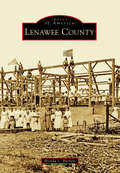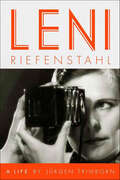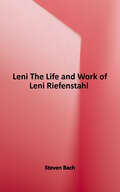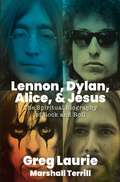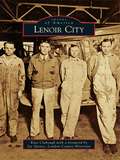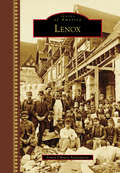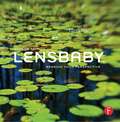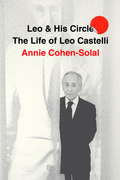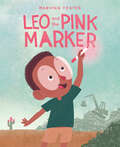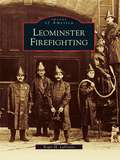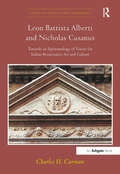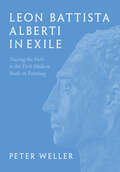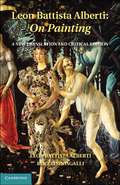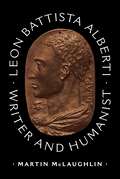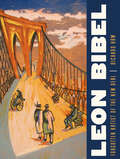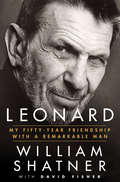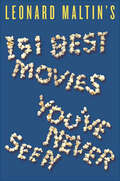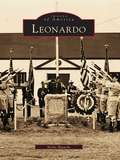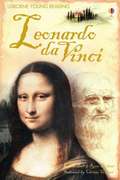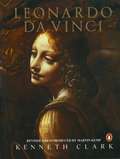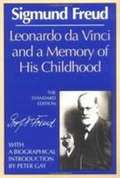- Table View
- List View
Lenawee County (Images of America)
by Brenda L. BurkettIn 1822, Gov. Lewis Cass defined the boundaries of six counties, including Lenawee. The Pottawattamies inhabited Lenawee County before settlers, many of Quaker descent, migrated from eastern states, predominantly New York. Abundant forests, prairies, hills, lakes, and streams surrounded by uncultivated fruit, berries, nuts, and wild game had enabled the county to lead the state in agricultural and industrial wealth by 1900. This early success is also partially owed to the establishment of the Grange by George B. Horton in 1873. Lenawee led the state with 34 Granges and more than 3,500 members by the turn of the century. Adrian would become known as the fence capital of the world, while Tecumseh was referred to as the celery capital. Michigan’s first cheese factories began in Fairfield Township in 1866, with Samuel Horton creating a new form of soft cheese. Recognition of the historical significance of this area is shown throughout the region today with landmarks that pay tribute to the pioneers.
Leni Riefenstahl: A Life
by Jürgen TrimbornDancer, actress, mountaineer, and director Leni Riefenstahl's uncompromising will and audacious talent for self-promotion appeared unmatched—until 1932, when she introduced herself to her future protector and patron: Adolf Hitler. Known internationally for two of the films she made for him, Triumph of the Will and Olympia, Riefenstahl's demanding and obsessive style introduced unusual angles, new approaches to tracking shots, and highly symbolic montages. Despite her lifelong claim to be an apolitical artist, Riefenstahl's monumental and nationalistic vision of Germany's traditions and landscape served to idealize the cause of one of the world's most violent and racist regimes.Riefenstahl ardently cast herself as a passionate young director who caved to the pressure to serve an all-powerful Führer, so focused on reinventing the cinema that she didn't recognize the goals of the Third Reich until too late. Jürgen Trimborn's revelatory biography celebrates this charismatic and adventurous woman who lived to 101, while also taking on the myths surrounding her. With refreshing distance and detailed research, Trimborn presents the story of a stubborn and intimidating filmmaker who refused to be held accountable for her role in the Holocaust but continued to inspire countless photographers and filmmakers with her artistry.
Leni: The Life and Work of Leni Riefenstahl
by Steven BachLeni Riefenstahl, the woman known as “Hitler’s filmmaker,” made some of the greatest and most innovative documentaries ever made. They are also insidious glorifications of Adolf Hitler and the Third Reich. Now, Steven Bach reveals the truths and lies behind Riefenstahl’s lifelong self-vindication as an apolitical artist who claimed to know nothing of the Holocaust and denied her complicity with the criminal regime she both used and sanctified. <p><p>A riveting and illuminating biography of one of the most fascinating and controversial personalities of the twentieth century.
Lennon, Dylan, Alice, and Jesus: The Spiritual Biography of Rock and Roll
by Greg LaurieA nationally best-selling author and pastor draws lessons of hope and transformation in the perils of excess, the agonies of repentance, and the wonder of redemption found in the life stories of several icons of pop music and rock and roll. From the author of Johnny Cash: The Redemption of an American Icon and Steve McQueen: The Salvation of an American Icon comes Lennon, Dylan, Alice, and Jesus, which traces the journeys, rise, fall, and sometimes the redemption of famous entertainers who were brought to their knees—a great place to look up and finally meet their Maker. Lennon, Dylan, Alice, and Jesus examines wretched excess, self-absorption and miraculous redemption; the book is a raw, sensitive, and unforgettable journey of sex, drugs, rock and roll, and sweet salvation. Author Greg Laurie traces the lives of rock stars and entertainment figures and legends who wallowed in the decadence of both the high life and low life, as they alternately experienced Heaven and Hell on Earth. He travels with them into their demonic abysses and joyfully chronicles their ultimate ascension to their prodigal moments. Lennon, Dylan, Alice, and Jesus chronicles the birth of rock and roll in the mid-1950s to today, giving the book an all-encompassing study of pop music history. Through his personal memories, coupled with his carefully crafted observational research, Greg Laurie not only looks deeply into the hearts and souls of these unusual people but bids the reader to join him on a spiritual journey down the secluded halls of the music industry with the individuals who crafted modern-day masterpieces. Readers will enjoy never-before-published accounts of the biggest recording artists of our time and hear testimonies from rockers of the 1950s, 1960s, 1970s, 1980s, 1990s, 2000s, and beyond. More importantly, every reader will find a deeper sense of God&’s presence, even in times of loneliness and desolation.
Lenoir City (Images of America)
by Kate Clabough Joe SpenceJohn C. Calhoun, Southern statesman and vice president under Andrew Jackson, once said, "the Lenoir estate in Loudon County is the most princely property in Tennessee. It has all the picturesque environments and attractive surroundings of an English baronial estate." In 1890, the Lenoir estate became Lenoir City thanks to a group of forward-thinking businessmen from New York City and Knoxville who saw the value and potential of the property once given to Gen. William Lenoir in appreciation for his exemplary Revolutionary War service. Surrounded by the meandering Tennessee River, the town was the perfect setting for water-driven industries such as flour and cotton mills, barges, and ferries. Today Lenoir City is a growing town that offers residents and visitors abundant recreational, shopping, and dining venues. It is located in Loudon County, the "Lakeway to the Smokies."
Lenox (Images of America)
by Lenox Library AssociationAs he rode through mid-19th-century Lenox, Massachusetts, Dr. Oliver Wendell Holmes wrote, "Perfect almost to a miracle." Founded in 1767, Lenox had sent Gen. John Paterson riding to the Revolutionary War 75 years earlier. Named the Shire Town because of its central Berkshires location, Lenox was home to the county courts. In the east, the center of a bustling glassworks and ironworks industry was situated by the Housatonic River. In the west, rolling hills and sparkling waters drew the literary lights to the New England Lake District. When the county seat moved to Pittsfield, fears of a local economic decline were unfounded with the arrival of the Gilded Age millionaires, who built stately seasonal estates with the charmingly ironic nickname of cottage. The exodus of the millionaires saw Lenox reinvent itself as a cultural and educational center, with private schools and performing arts organizations, Tanglewood chief among them, located on former estates. Change may come to Lenox again, but one constant remains throughout these past 250 years: its scenic beauty.
Lens On Life: Documenting Your World Through Photography
by Stephanie Calabrese RobertsMostly candid and spontaneous, documentary photography serves to preserve a moment in time. In Lens on Life, celebrated documentary photographer and author of the best-selling The Art of iPhoneography: A Guide to Mobile Creativity, Stephanie Calabrese Roberts, inspires you to explore, shoot, and share documentary photographs, guiding you as you define your own style. Illustrated with the author's striking artwork and diverse insight and perspectives from seasoned photographers including Elliott Erwitt, Elizabeth Fleming, Sion Fullana, Ed Kashi, John Loengard, Beth Rooney, and Rick Smolan, this book will sharpen your artistic intuition and give you the confidence to take on personal or professional documentary assignments. Full of advice that will challenge you and strengthen your photography, Lens on Life shows you how to capture an authentic view of your world.
Lens on Life: Documenting Your World Through Photography
by Stephanie C. RobertsMostly candid and spontaneous, documentary photography serves to preserve a moment in time. In Lens on Life, celebrated documentary photographer Stephanie Calabrese Roberts inspires you to explore, shoot, and share documentary photographs, guiding you as you define your own style. Illustrated with the author's striking artwork as well as that of eight seasoned photographers who have visually documented stories all over the world, this book will sharpen your artistic intuition and give you the confidence to take on personal or professional documentary assignments. Full of advice that will challenge you and strengthen your photography, Lens on Life shows you how to capture an authentic view of your world.
Lensbaby: Bending your perspective
by Corey HilzIf you've ever wished you could learn about all of the creative possibilities the Lensbaby offers, this is the book for you! Seeing subjects with a new perspective is at the heart of the Lensbaby experience, and with the essential information found in this book, you'll be able to take your creative exploration to the next level. Written by Lensbaby Guru Corey Hilz, Lensbaby: Bending Your Perspective starts off with an overview of each lens in the Lensbaby suite. Then comes the fun stuff! Packed with tips on composition and techniques for capturing your best images, you'll be immersed in the wonderful world of Lensbaby in no time. On nearly every page you'll find a full color image created by a Lensbaby expert to inspire your own shooting. You'll also find complete coverage of all of the Lensbaby accessories, from the Optic Swap System to a macro kit, creative aperture discs, and a super wide angle lens. With this gorgeous and practical book by your side, you'll never see the world in the same way again.
Leo and His Circle: The Life of Leo Castelli
by Annie Cohen-SolalLeo Castelli reigned for decades as America's most influential art dealer. "Leo and His Circle" tells the story of his astonishing life and career.
Leo and the Pink Marker
by Mariyka FosterIt's fun to color outside the lines in this playful celebration of family, creativity, and the color pink!Leo LOVES doodling away with his pink marker! So when Mom and Mama aren&’t looking, he finds an opportunity to liven up the dusty, gray scrapyard. A splash of pink would look great on that crunched-up convertible, and that magnet crane...and the family cat. Uh-oh! Leo got carried away. Will his moms be upset?This playful ode to Harold and the Purple Crayon casually explores a LGTBQ+ family and is filled with vibrant illustrations that pop from the page. Pick this one up for any child that loves the color pink!
Leominster Firefighting (Images of America)
by Roger H. LapointeIn 1820, a group of Leominster volunteers formed Engine Company No. 1 "in the interests of protecting the rights of the settlers in case of fire." Since then, more than 1,400 individuals have served as firefighters for the citizens of Leominster, each of them leaving behind a legacy that will never be forgotten. Leominster Firefighting features images, memorabilia, and photographs from the early days of the hand tubs and horse-drawn hose carts of the 1800s to the 20th century when motorized apparatus arrived. It provides a glimpse into the many traditions that have been passed from one generation to the next and a look into how fire has changed Leominster.
Leon Battista Alberti and Nicholas Cusanus: Towards an Epistemology of Vision for Italian Renaissance Art and Culture (Visual Culture in Early Modernity)
by Charles H. CarmanProviding a fresh evaluation of Alberti’s text On Painting (1435), along with comparisons to various works of Nicholas Cusanus - particularly his Vision of God (1450) - this study reveals a shared epistemology of vision. And, the author argues, it is one that reflects a more deeply Christian Neoplatonic ideal than is typically accorded Alberti. Whether regarding his purpose in teaching the use of a geometric single point perspective system, or more broadly in rendering forms naturalistically, the emphasis leans toward the ideal of Renaissance art as highly rational. There remains the impression that the principle aim of the painter is to create objective, even illusionistic images. A close reading of Alberti’s text, however, including some adjustments in translation, points rather towards an emphasis on discerning the spiritual in the material. Alberti’s use of the tropes Minerva and Narcissus, for example, indicates the opposing characteristics of wisdom and sense certainty that function dialectically to foster the traditional importance of seeing with the eye of the intellect rather than merely with physical eyes. In this sense these figures also set the context for his, and, as the author explains, Brunelleschi’s earlier invention of this perspective system that posits not so much an objective seeing as an opposition of finite and infinite seeing, which, moreover, approximates Cusanus’s famous notion of a coincidence of opposites. Together with Alberti’s and Cusanus’s ideals of vision, extensive analysis of art works discloses a ubiquitous commitment to stimulating an intellectual perception of divine, essential, and unseen realities that enliven the visible material world.
Leon Battista Alberti in Exile: Tracing the Path to the First Modern Book on Painting
by Peter WellerThe prodigy poet, playwright, architect, painter, and humanist savant Leon Battista Alberti emerged in 1435 with De pictura ['On Painting'], the modern era's earliest discourse on Western art, written in classical Latin by an ostensible practitioner of the craft. Alberti has captivated the art world from his own epoch to ours, and his dubious Florentine identity enables this allure. In this volume, Peter Weller challenges the popular notion that De pictura's compendium on lines, points, mathematics, composition, narrative, and portraiture is primarily the result of Alberti's return to Florence and his short exposure to its visual art. Weller argues that Rome, Padua, Bologna, and northern Europe – environs where Alberti studied, worked, and lived during exile – empowered his paramount intellectual-artistic gift. Scrutiny of Alberti's evolution before Florence illuminates how this original Renaissance man merged the two most conspicuous cultural developments of early modern Italy – visual art and humanism — to create De pictura, our first modern book on painting.
Leon Battista Alberti: On Painting
by Rocco Sinisgalli Leon Battista AlbertiLeon Battista Alberti was one of the most important humanist scholars of the Italian Renaissance. Active in mid-fifteenth-century Florence, he was an architect, theorist, and author of texts on perspective and painting. Leon Battista Alberti: On Painting is a cardinal work that revolutionized Western art. In this volume, Rocco Sinisgalli presents a new English translation and critical examination of Alberti's seminal text. Dr Sinisgalli reverses the received understanding of the relationship between the Italian and Latin versions of Alberti's treatise by demonstrating that Alberti wrote it first in Italian and then translated it into a polished Latin over the course of several decades. This volume is richly illustrated to help demonstrate how Alberti understood optics and art.
Leon Battista Alberti: Writer and Humanist
by Martin McLaughlinThe first book in English to examine Leon Battista Alberti&’s major literary works in Latin and Italian, which are often overshadowed by his achievements in architectureLeon Battista Alberti (1404–1472) was one of the most prolific and original writers of the Italian Renaissance—a fact often eclipsed by his more celebrated achievements as an art theorist and architect, and by Jacob Burckhardt&’s mythologizing of Alberti as a "Renaissance or Universal Man." In this book, Martin McLaughlin counters this partial perspective on Alberti, considering him more broadly as a writer dedicated to literature and humanism, a major protagonist and experimentalist in the literary scene of early Renaissance Italy. McLaughlin, a noted authority on Alberti, examines all of Alberti&’s major works in Latin and the Italian vernacular and analyzes his vast knowledge of classical texts and culture.McLaughlin begins with what we know of Alberti&’s life, comparing the facts laid out in Alberti&’s autobiography with the myth created in the nineteenth century by Burckhardt, before moving on to his extraordinarily wide knowledge of classical texts. He then turns to Alberti&’s works, tracing his development as a writer through texts that range from an early comedy in Latin successfully passed off as the work of a fictitious ancient author to later philosophical dialogues written in the Italian vernacular (a revolutionary choice at the time); humorous works in Latin, including the first novel in that language since antiquity; and the famous treatises on painting and architecture. McLaughlin also examines the astonishing range of Alberti's ancient sources and how this reading influenced his writing; what the humanist read, he argues, often explains what he wrote, and what he wrote reflected his relentless industry and pursuit of originality.
Leon Bibel: Forgotten Artist of the New Deal
by Richard HawLeon Bibel (1913–1995) was a prolific modern American artist who painted, printed, stamped, etched, sketched, and carved. He produced pieces that ranged from social realism to dreamy expressionism and was an aesthetic experimentalist, never working for too long in any medium or style. And despite Bibel's obvious talent, his work would have languished in obscurity were it not for the New Deal programs like the Federal Art Project and Public Works of Art Project. Leon Bibel, the first biography of this eclectic artist, recounts his life from his birth in Szczebrzeszyn, Poland, in 1913, to his death in New Jersey in 1995. After immigrating to the United States in the 1920s, Bibel came of age during the Great Depression, when New Deal agencies recognized his abilities and supported his artistic endeavors. Working-class artists faced challenges after these programs folded, and Bibel would later spend twenty years as a New Jersey chicken farmer before resurrecting his art career in the 1960s. Historian Richard Haw shows how Bibel's life was defined by the New Deal, his visionary artwork shaped by the era's commitment to social and economic justice. With reproductions of more than 240 of Bibel's works, most in vivid color, this book reveals how he depicted everything from the trauma of unemployment to the dignity of work, from the horrors of lynching to the pleasures of everyday life.
Leonard
by William Shatner David FisherLeonard Nimoy and William Shatner first crossed paths as actors on the set of The Man from U.N.C.L.E. Little did they know that their next roles, in a new science fiction television series, would shape their lives in ways no one could have anticipated. In seventy-nine television episodes and six feature films, they grew to know each other more than most friends could ever imagine. Over the course of half a century, Shatner and Nimoy saw each other through personal and professional highs and lows. In this powerfully emotional book, Shatner tells the story of a man who was his friend for five decades, recounting anecdotes and untold stories of their lives on and off set, as well as gathering stories from others who knew Nimoy well, to present a full picture of a rich life. As much a biography of Nimoy as a story of their friendship, Leonard is a uniquely heartfelt book written by one legendary actor in celebration of another.
Leonard Maltin's 151 Best Movies You've Never Seen
by Leonard MaltinWhat 151 movies have you never seen—but should?What French film could teach Hollywood how to make a smart, sexy romantic comedy? (page 233)Where will you find a female-centric Western with a gender-bending protagonist? (page 10)What film won a Special Jury Prize at Sundance and then fell off the radar? (page 261)What farcical comedy includes such real-life characters as Richard Nixon and Henry Kissinger? (page 50)In what unsung comedy will you find Michael Douglas giving his all-time best performance? (page 130)What debut film from the director of The Dark Knight creates palpable chills—despite a shoestring budget and a no-name cast? (page 79)What John Wayne movie was out of circulation for thirty years—and still qualifies as a sleeper? (page 121)What terrific Heath Ledger movie was released the same month as Brokeback Mountain—and flopped? (page 26)What clever modern-day film noir was made for just half a million dollars? (page 18)What captivating film stars one of the seminal artists of the twentieth century? (page 203)
Leonard Maltin's 2014 Movie Guide
by Leonard MaltinSummer blockbusters and independent sleepers; masterworks of Alfred Hitchcock, Billy Wilder, and Martin Scorsese; the timeless comedy of the Marx Brothers and Buster Keaton; animated classics from Walt Disney and Pixar; the finest foreign films ever made. This 2014 edition covers the modern era, from 1965 to the present, while including all the great older films you can't afford to miss--and those you can--from box-office smashes to cult classics to forgotten gems to forgettable bombs, listed alphabetically, and complete with all the essential information you could ask for. NEW Nearly 16,000 capsule movie reviews, with more than 300 new entries NEW More than 25,000 DVD and video listings NEW Up-to-date list of mail-order and online sources for buying and renting DVDs and videos NEW Completely updated index of leading performers MORE Official motion picture code ratings from G to NC-17 MORE Old and new theatrical and video releases rated **** to BOMB MORE Exact running times--an invaluable guide for recording and for discovering which movies have been edited MORE Reviews of little-known sleepers, foreign films, rarities, and classics AND Leonard's all-new personal recommendations for movie lovers * Date of release, running time, director, stars, MPAA ratings, color or black-and-white * Concise summary, capsule review, and four-star-to-BOMB rating system * Precise information on films shot in widescreen format * Symbols for DVDs, videos, and laserdiscs * Completely updated index of leading actors * Up-to-date list of mail-order and online sources for buying and renting DVDs and videos
Leonard Maltin's Movie Guide: The Modern Era
by Leonard MaltinWITH A NEW INTRODUCTION BY THE AUTHORNow that Netflix and Hulu can deliver thousands of movies at the touch of a button, the only question is: What should I watch?With nearly 16,000 entries and more than 13,000 DVD listings, Leonard Maltin's Movie Guide remains "head and shoulders above the rest." (The New York Times) It also includes an up-to-date list of mail-order and online sources for buying and renting DVDs and videos, official motion picture code ratings from G to NC-17, old and new theatrical and video releases rated four-stars to BOMB, exact running times, reviews of little-known sleepers, foreign films, rarities, and classics, and Leonard's list of 60 breakthrough performances."****"—USA Today
Leonardo
by Holly BianchiLeonardo, one of Monmouth County's most picturesque seaside resorts, is portrayed in images that will fill the heart and lift the spirit. With some two hundred vintage photographs, Leonardo offers an overview of this beautiful beach town, which lies on the banks of the Sandy Hook Bay in central New Jersey. A tightly knit and friendly community, Leonardo has long been recognized as a haven for artists and writers. The town's sandy beaches and intriguing maritime history attract thousands of visitors every year.With a collection of early-twentieth-century to the recent past photographs and informative historical information, Leonardo explores the many features of a town that has become known as the "jewel in the crown." This history features images of Leonardo's celebrated sculptor and artist Donald DeLue, who created the sculpture The Rocket Thrower for the 1964-1965 New York World's Fair. Also seen are photographs of the Leonardo State Marina and the famous Conover Beacon Lighthouse. The historic Applegate Cemetery, where the legendary Mary Stillwell Applegate is buried, is pictured along with a description of its folklore tale.
Leonardo Da Vinci
by Kenneth Clark Martin KempA personally compelling introduction to Leonardo's genius, a classic monograph of Leonardo's art and his development.
Leonardo Da Vinci and a Memory of His Childhood
by Sigmund FreudA detailed reconstruction of Leonardo's emotional life from his earliest years, it represents Freud's first sustained venture into biography from a psychoanalytic perspective, and also his effort to trace one route that homosexual development can take.
